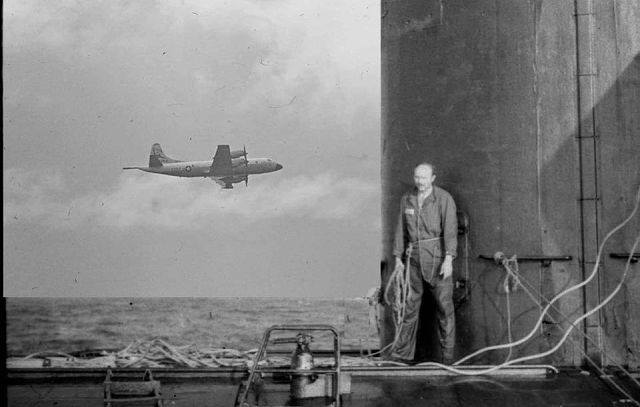Today in 1964 near Hattiesburg, Mississippi, the first of two underground nuclear tests were conducted as part of Project Dribble (a joint-DOD-AEC effort under the VELA Uniform program) to ascertain the ability to detect and correctly assess the yield of explosions in salt domes. 



The Salmon test, 57 years ago today, involved a 5.3-kiloton device designed by the E.O. Lawrence Radiation Laboratory detonated at the bottom of a 2,710-foot shaft drilled into Tatum Salt Dome. Hattiesburg's 400 residents evacuated beforehand (adults were paid $10, children $5). 



The shockwave, which lifted the ground in the vicinity of the test site by four inches, was significantly larger than residents had been led to expect. Below, Horace Burge, who lived just two miles away, returns home to inspect the damage to his kitchen. 







Today, the site is marked with a granite monument erected by the Department of Defense explaining what happened there, along with a warning not to excavate, drill, or remove any materials from the area. 





In 2015, students at the University of Mississippi released "Atomic Mississippi," using archival footage and interviews with experts and local residents to examine the only nuclear tests east of the Mississippi River, including their environmental impacts.
The little-known Project Dribble tests on October 22, 1964, and December 3, 1966, were also discussed in the 1999 documentary "Atomic Journeys: Welcome to Ground Zero."
Although the Atomic Energy Commission assured site workers and local residents the risk of exposure to any radioactivity was minimal due to the depth of the tests, drillback operations and other activities did contaminate the air, water, soil, and people. nola.com/news/environme…
By 2015, the Department of Labor—through the Energy Employees Occupational Illness Compensation Program Act—had paid $16.8 million to settle 56 former workers' medical claims for serious illnesses linked to their work on the Project Dribble nuclear tests. sunherald.com/article4944801…
Project Dribble was originally planned as a series of three nuclear tests: the 5.3-kiloton Salmon shot followed by two 100-ton shots—Sand and Tar—conducted in the cavity excavated by Salmon. However, drilling problems led to Sand and Tar being canceled. osti.gov/servlets/purl/… 



Yet at some point after the Salmon test, the DOD and the AEC clearly decided they wanted to conduct another nuclear test at the site, leading to the decoupled 380-ton Sterling test inside the Salmon cavity on December 3, 1966. 

Under Project Miracle Play, there were also two large methane-oxygen explosive tests conducted in the cavity—each about 315 tons—simulating underground nuclear blasts: Diode Tube (February 2, 1969) and Humid Water (April 19, 1970, which was accidentally detonated two days early).
• • •
Missing some Tweet in this thread? You can try to
force a refresh


























